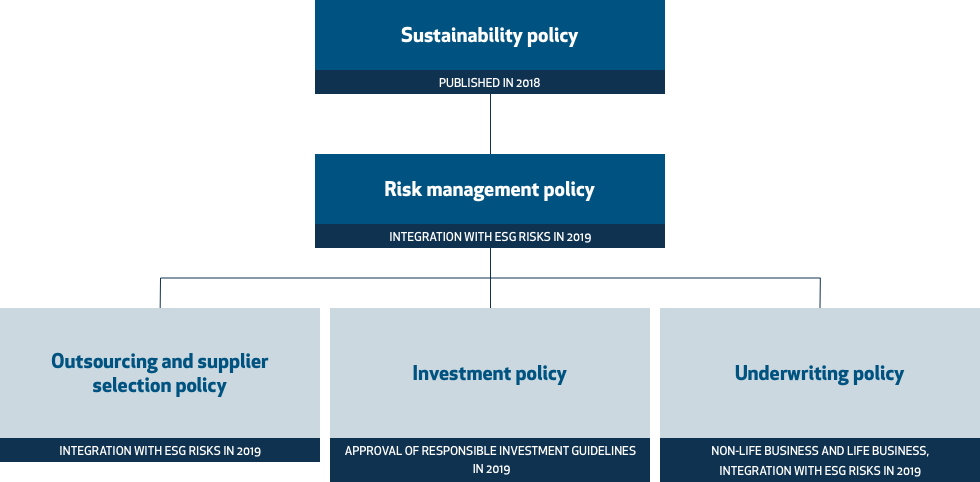Management of ESG Risks
In the insurance sector, the ability to identify, assess and manage risks is a key element for a Company’s competitive ability and long-term sustainability. Unipol, in line with the positions of institutions and regulators, believes that the integration of risks associated with environmental, social and corporate governance factors is necessary for an increasingly improved understanding of the context in which the Group operates, a more conscious risk underwriting and, ultimately, a greater ability to respond to the needs of customers and of the community.
For this reason, the Group’s Risk Management Policy, a key document that lays down the Unipol Group’s risk management strategies and objectives, contains a specific section on “ESG Risks”, where it defines, identifies and describes the main methods to manage them.
ESG risk means risk deriving from ESG factors attributable to environmental, social and governance issues, which are material for the Group and for the stakeholders, as defined in the materiality matrix.
Within the ERM (Enterprise Risk Management) Framework, the Group identifies and controls ESG risk factors:
The Group has structured ESG risk controls within the individual categories of current risk, so as to manage such risks at all stages of the value-creation process and to mitigate the onset of any reputation risk associated with ESG risks. These measures are also designed to prevent the concentration of exposures to areas and/or sectors that are significantly exposed to ESG risks. In this context, particular consideration is given to climate change and its impacts on underwriting and investment activities.
The main ESG risk areas identified are climate change, increase in social polarisation, socio-demographic change, technological evolution of the society, violation of human and worker rights, environmental damage and negative impact on the environment and behaviour in violation of the integrity of corporate conduct.
The safeguards designed to prevent the onset of ESG risks and to mitigate their effects are defined in the Management Policies of individual risk categories, where appropriate, such as, inter alia:
- Investment Policy;
- Underwriting Policies relating to the Non-Life business and the Life business;
- Outsourcing and supplier selection Policy.



